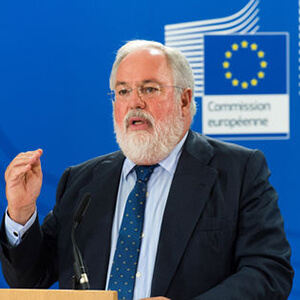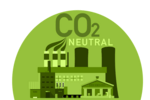News Release from International Renewable Energy Agency IRENA
Wind Industry Profile of
Finding opportunity in the energy transformation - the perspective from the EU
The EU has made progress. Overall, it improved its energy intensity by over 20% between 2005 and 2016, keeping its final energy consumption stable despite economic growth. In 2015, increased use of renewables reduced greenhouse gas emissions equivalent to Italy’s total emissions and saved the EU €16 billion in fossil fuel imports.
At the same time, Commissioner Cañete reminded the audience at the 4th EU Energy Summit that although significant progress has been made, there is still a long way to go, noting that “still coal, gas and oil together accounted for some 72% of our primary energy consumption in 2016, and most of this is imported.”
In February this year, as part of the Remap programme IRENA published Renewable Energy Prospects for the European Union, prepared in co-operation with the European Commission. The report found that the EU could cost effectively double the renewable share in its energy mix, from 17% in 2015 to 34% in 2030. IRENA reached out to Commissioner Cañete to get his views on Europe’s energy transformation.
IRENA: In the EU Action Plan on Financing Sustainable Growth, the European Commission states that “sustainability and transition to low-carbon, more efficient and circular economy are key in ensuring long-term competitiveness of the EU economy.” How, in your view, are the energy transformation and sustainability fundamental to the EU economy as a whole?
Commissioner Cañete: The importance of the energy sector for the EU economy cannot be overstated: It employs close to 2.2 million people, spread over 96,000 companies across Europe, representing 2% of total added value. Energy represents on average 6% of annual household expenditure.
The research and innovation development of new technologies and services across the energy supply chain has led to the creation of new businesses throughout Europe, providing jobs and economic growth for Europeans.
 At the end of 2016, the European Commission put together the "Clean Energy for all Europeans” package. Through eight new or revised pieces of legislation, including to the Renewable Energy Directive, this is putting in place the most advanced regulatory framework to facilitate the investment that we need in Europe to modernise our economy.
At the end of 2016, the European Commission put together the "Clean Energy for all Europeans” package. Through eight new or revised pieces of legislation, including to the Renewable Energy Directive, this is putting in place the most advanced regulatory framework to facilitate the investment that we need in Europe to modernise our economy.
Although there is the challenge of attracting the necessary investment, this transition represents an enormous opportunity for the EU: By mobilizing up to €177 billion of public and private funds per year until 2021, we can grow GDP by up to 1% and create 900,000 new jobs over the next decade.
Public money alone will not be enough to cover investment needs: the financial sector will have to throw its full weight behind the fight against climate change. This is why the European Commission came up with a dedicated EU Action Plan on Financing Sustainable Growth. We believe that the clean energy transition also provides an excellent opportunity to re-vitalize the financial sector by attracting private capital to energy efficiency projects, renewable energy technologies and supply infrastructure, smart energy system development; and to exploit the large potential of research and innovation in radically changing energy supply and demand patterns.
IRENA: If the EU was to scale-up renewables to 34% by 2030, there would be an estimated net cost savings of US$25 billion per year, notwithstanding saved health and environmental costs. This is echoed in the EU Action Plan which states that the “investment gap of almost €180 billion to achieve EU climate and energy targets by 2030 must be closed.” Yet since 2011, new investments in renewable energy in Europe have slowed. What do you think accounts for this disconnect, and how is the EU working to address it?
Commissioner Cañete: In the EU, generation capacity from renewable resources, mainly wind and solar, has been increasing since 2000. We estimate that by 2030, more than 50% of the electricity we consume will come from renewables.
But indeed, while new installed wind and solar capacity saw a significant increase to 2011, investments in renewables have slowed since 2011, primarily due to the downward revision of national support schemes in EU Member States and missing regulatory incentives in some Member States. An important factor in this context is the falling technology cost of renewables. As IRENA data has shown, the global cost of solar PV has decreased by almost 70% between 2010 and 2017. Renewables are more and more competitive against conventional technologies.
Since 2013, investments in renewables have been stable. In 2017, the EU was the second largest market for renewables in the world. At the same time, deployment has continued to increase due to the falling costs. For example, in 2017 the EU's solar PV market grew by 6% and wind turbine market grew by 25%.
The EU is very keen to show leadership in fulfilling our Paris Agreement commitments. Transforming the energy sector is key in this context. Under the Clean Energy for all Europeans package, investments will allow the EU to cut greenhouse gas emissions by at least 40% by 2030 and ultimately be carbon neutral by 2050, while contributing to economic growth and jobs in Europe.
By setting the right targets and measures for the use of renewables, we believe we can get all EU countries moving together in the right direction and create economies of scale literally at continental level. While Member States are willing to support a renewables target of at least 27% by 2030, I'm pleased to note that the European Parliament is pressing for an even bolder approach that coincides with the IRENA REmap findings.
The 27% target and proposed measures should provide the necessary security to encourage investment, and the clearer legal framework provided by the revised directive will remove uncertainties for investors, reduce administrative burdens and decrease costs. Our focus is on the potential for renewables in electricity, heating and cooling and transport sectors. This will enable Europe to reinforce its industrial competitiveness and to remain a global leader in renewables.
We are confident that with this package in place, investments will continue to grow, as the EU is indeed looking for investments in the range of €180 billion per year to achieve its objectives for 2030. This number constitutes investments in all sectors, as well as in energy efficiency, renewables, and infrastructure. For the power sector alone, the investment needs are around €75 billion per year of which 33% is needed for renewables and 47% for the power grid.
 IRENA: What are some of the promising options that you see to scale-up the share of renewables in heating and cooling in the EU, and what are some of the measures that the EU is adopting to support e-mobility?
IRENA: What are some of the promising options that you see to scale-up the share of renewables in heating and cooling in the EU, and what are some of the measures that the EU is adopting to support e-mobility?
Commissioner Cañete: In Europe, the share of modern renewables in the heating and cooling sector is 19.1%, largely from biomass. This is significantly higher than any other large economy in the world. Thanks to the uses of bioenergy, 5 EU Member States have shares of 40% or higher of renewables, which makes them global leaders in this area. However, in most of EU Member States there is a significant untapped potential for renewables in this sector.
The European Commission recognises that renewables in the heating and cooling sector are some of the most cost-effective solutions to further increase renewables and has proposed to increase the share of renewables in the heating and cooling sector by 1% per year over the period from 2021 to 2030.
The European Commission’s assessments, like those of the IRENA study, suggest that increasing the share of renewables in the heating and cooling sector will also increase the diversity of renewable energy options, including heat pumps, solar thermal and geothermal options. District heating and cooling systems can particularly help the cost-effective and efficient integration of renewables in urban areas.
Today, transport accounts for roughly a quarter of the EU's greenhouse gas emission, with road transport alone responsible for 22%, and growing.
The European Commission’s strategy for low-emission mobility reaffirms the objective of reducing greenhouse gas emissions from transport by at least 60% on 1990 level by 2050. Following the principal of technology neutrality in this area, our policy aims at increasing the deployment of zero- and low-emission vehicles overall.
Mainstreaming renewables in the power sector will require high levels of deployment of renewable capacity to replace and repower existing assets, and related infrastructure in order to overcome one of the major bottlenecks in the electric vehicle market. Assuming a rapid market uptake of electric vehicles, by 2020 up to 440 000 public accessible recharging points would be needed in the EU. This could cost up to €3.9 billion, supported finically via the EU’s infrastructure programmes.
The European Commission has therefore put forward an Action Plan aiming to boost investment in alternative fuel infrastructure and develop a network of fast and interoperable recharging and fuelling stations across the EU. We also proposed to include charging infrastructure in the EU's building stock during construction and renovation works. New provisions for example require the installation of recharging points and ducting infrastructure in our buildings’ car parks. Technical solutions and a pricing scheme that attracts consumers are also required to promote smart charging.
- Source:
- IRENA
- Author:
- Press Office
- Link:
- www.irena.org/...
- Keywords:
- IRENA, interview, EU, Europe, energy ransition, view, study
























